
 |
Version creation and permissions example |
|
| Release 9.3 |    |
NOTE: Remember, versions are like different views of the geodatabase, not copies of the geodatabase. There is only one copy of each dataset in the geodatabase no matter how many versions you create.
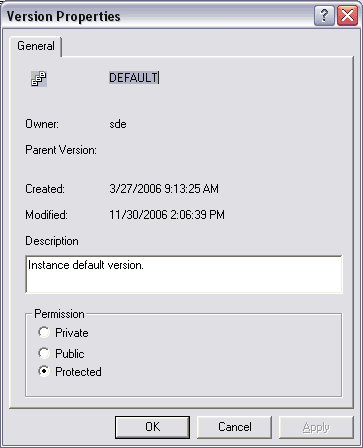 After the ArcSDE administrator makes the permission change to DEFAULT and clicks OK, he is back in the Version Manager dialog box. From here, he creates a new version from the DEFAULT version.
After the ArcSDE administrator makes the permission change to DEFAULT and clicks OK, he is back in the Version Manager dialog box. From here, he creates a new version from the DEFAULT version.
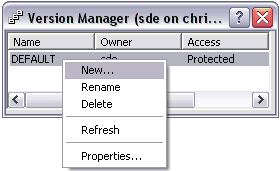 He names the new version Base and sets the version's permission to Public.
He names the new version Base and sets the version's permission to Public.
 There are now two versions: DEFAULT and Base.
There are now two versions: DEFAULT and Base.
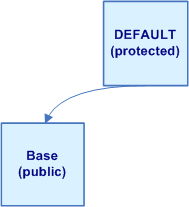 All employees can connect to both versions. Only the ArcSDE administrator can edit data when connected to the DEFAULT version and post to the DEFAULT version. When employees connect through the Base version, they can edit any datasets to which they have been granted the required dataset permissions.
All employees can connect to both versions. Only the ArcSDE administrator can edit data when connected to the DEFAULT version and post to the DEFAULT version. When employees connect through the Base version, they can edit any datasets to which they have been granted the required dataset permissions.
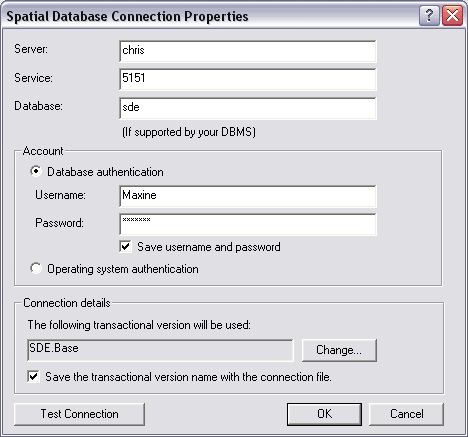 When Maxine finishes a set of edits, the ArcSDE administrator checks Maxine's edits in the Base version. If the changes are okay, they are reconciled with the DEFAULT version to bring in any changes that may have been made in the DEFAULT version. Since only Maxine should be editing this data, there shouldn't be any conflicts found during the reconcile. At this time, the ArcSDE administrator posts the changes to the DEFAULT version. (For details on reconciling, resolving conflicts, and posting, see Reconciling a version, Reviewing conflicts, Resolving conflicts interactively, and Posting changes.) This moves all of Maxine's edits into the DEFAULT version.
When Maxine finishes a set of edits, the ArcSDE administrator checks Maxine's edits in the Base version. If the changes are okay, they are reconciled with the DEFAULT version to bring in any changes that may have been made in the DEFAULT version. Since only Maxine should be editing this data, there shouldn't be any conflicts found during the reconcile. At this time, the ArcSDE administrator posts the changes to the DEFAULT version. (For details on reconciling, resolving conflicts, and posting, see Reconciling a version, Reviewing conflicts, Resolving conflicts interactively, and Posting changes.) This moves all of Maxine's edits into the DEFAULT version.
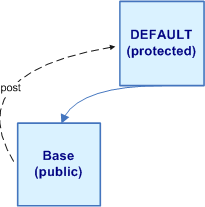
 Then, from the Version Manager dialog box, Angus creates a new version from DEFAULT.
Then, from the Version Manager dialog box, Angus creates a new version from DEFAULT.
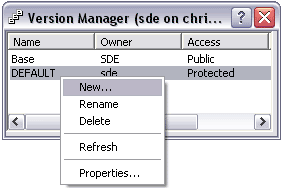 The version is named Cases, and the permission is set to Public. This will serve as the parent version to versions created for each individual case. This version will also be used by Angus to perform quality assurance checks on all the case data before it is reconciled with and posted to the DEFAULT version by the ArcSDE administrator.
The version is named Cases, and the permission is set to Public. This will serve as the parent version to versions created for each individual case. This version will also be used by Angus to perform quality assurance checks on all the case data before it is reconciled with and posted to the DEFAULT version by the ArcSDE administrator.
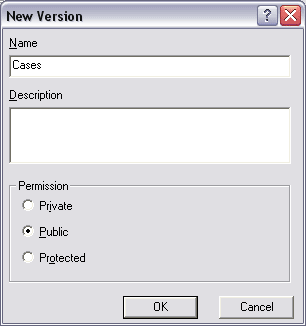 There are now three versions: DEFAULT, Base, and Cases.
There are now three versions: DEFAULT, Base, and Cases.
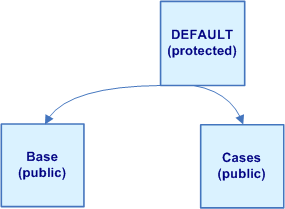 All employees can connect to all three versions. Only the ArcSDE administrator can edit data when connected to the DEFAULT version and post to the DEFAULT version. When employees connect through the Base or Cases versions, they can edit any datasets to which they have been granted the required dataset permissions.
All employees can connect to all three versions. Only the ArcSDE administrator can edit data when connected to the DEFAULT version and post to the DEFAULT version. When employees connect through the Base or Cases versions, they can edit any datasets to which they have been granted the required dataset permissions.
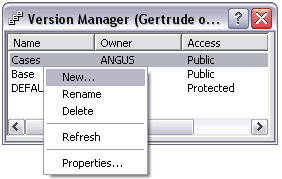 These versions are set to Protected, so only the investigator working on the case at the time can edit the datasets when connected to this version.
As you can see on the Version Manager dialog box below, Gertrude has created a version called Case1, and Frank created Case2. Gertrude will connect to Case1 when she edits the case-related datasets, adding data relevant to that case. Similarly, Frank will connect to Case2 and edit the case-related datasets, adding the data relevant to his case. All the other employees can connect to these versions, but they cannot make any edits to the datasets from these versions, because the versions are set to Protected.
These versions are set to Protected, so only the investigator working on the case at the time can edit the datasets when connected to this version.
As you can see on the Version Manager dialog box below, Gertrude has created a version called Case1, and Frank created Case2. Gertrude will connect to Case1 when she edits the case-related datasets, adding data relevant to that case. Similarly, Frank will connect to Case2 and edit the case-related datasets, adding the data relevant to his case. All the other employees can connect to these versions, but they cannot make any edits to the datasets from these versions, because the versions are set to Protected.
 The versions listed above are related as follows:
The versions listed above are related as follows:
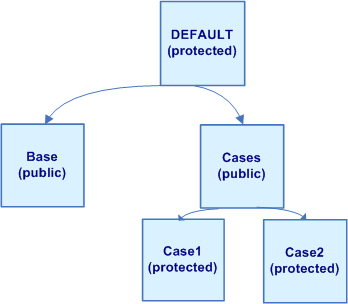 When Gertrude finishes her edits for Case1, she reconciles and posts her changes to Cases. Since Frank may also be editing the same datasets and reconciling and posting changes to Cases, there is a potential for conflicts at this point. Once these have been reviewed and resolved, Gertrude can post to Cases. (See Saving edits to a version, Reconciling a version, Reviewing conflicts, Resolving conflicts interactively, and Posting changes for details.)
When Gertrude finishes her edits for Case1, she reconciles and posts her changes to Cases. Since Frank may also be editing the same datasets and reconciling and posting changes to Cases, there is a potential for conflicts at this point. Once these have been reviewed and resolved, Gertrude can post to Cases. (See Saving edits to a version, Reconciling a version, Reviewing conflicts, Resolving conflicts interactively, and Posting changes for details.)
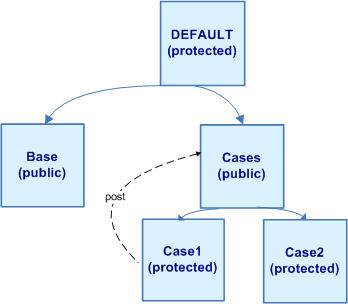 Angus reviews the changes in the Cases version. If they are acceptable, the ArcSDE administrator will post the changes in Cases to the DEFAULT version.
Since work on Case1 is complete and the data has been reviewed and posted to DEFAULT, Gertrude can now delete Case1.
Angus reviews the changes in the Cases version. If they are acceptable, the ArcSDE administrator will post the changes in Cases to the DEFAULT version.
Since work on Case1 is complete and the data has been reviewed and posted to DEFAULT, Gertrude can now delete Case1.
NOTE: You have to be connected as the owner to delete a version. For example, Gertrude could not delete the Case2 version.
 That leaves the following versions:
That leaves the following versions:
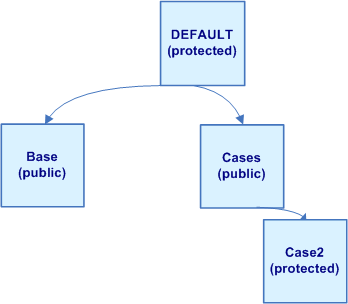 Frank will follow the same procedure with edits done through Case2 (reconcile, resolve conflicts, post to Cases), Angus will check his work in the Cases version, the ArcSDE administrator will post the approved changes to DEFAULT, and Frank can delete version Case2.
Frank will follow the same procedure with edits done through Case2 (reconcile, resolve conflicts, post to Cases), Angus will check his work in the Cases version, the ArcSDE administrator will post the approved changes to DEFAULT, and Frank can delete version Case2.